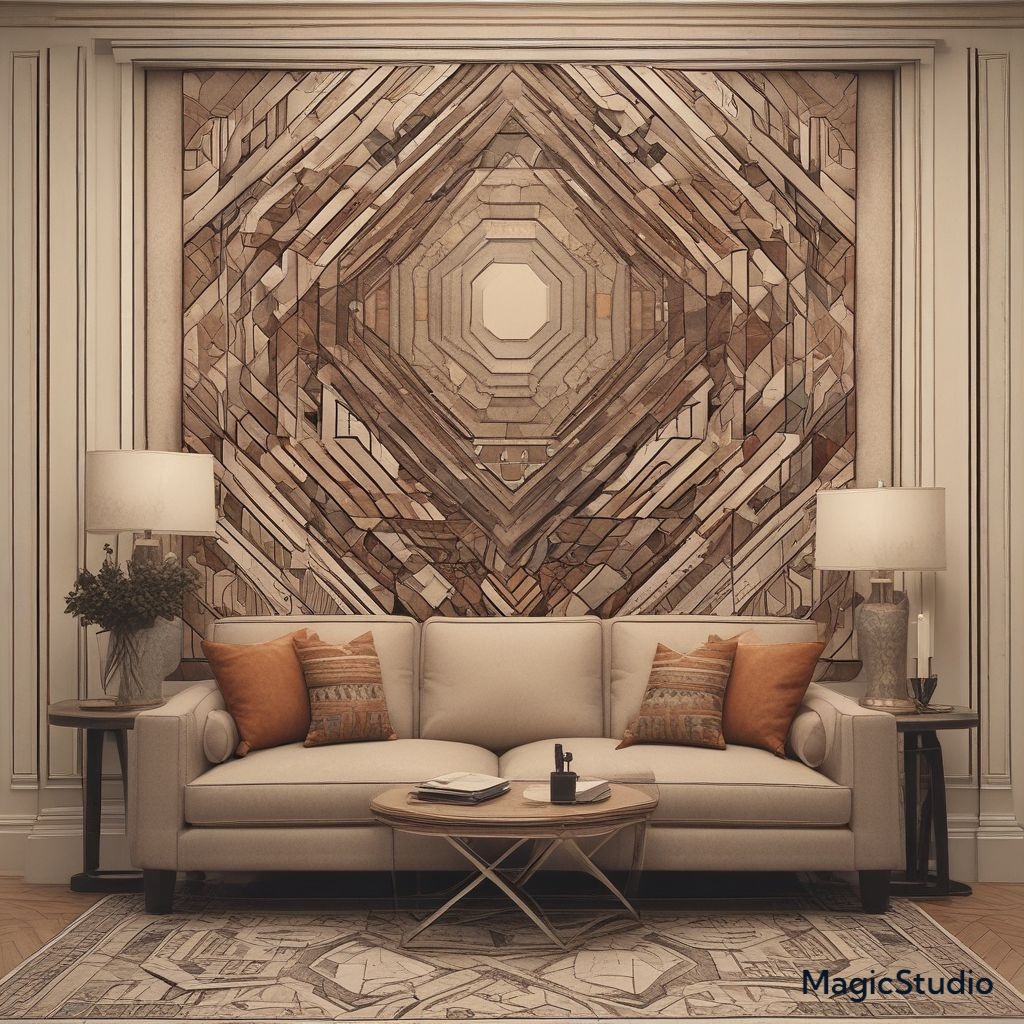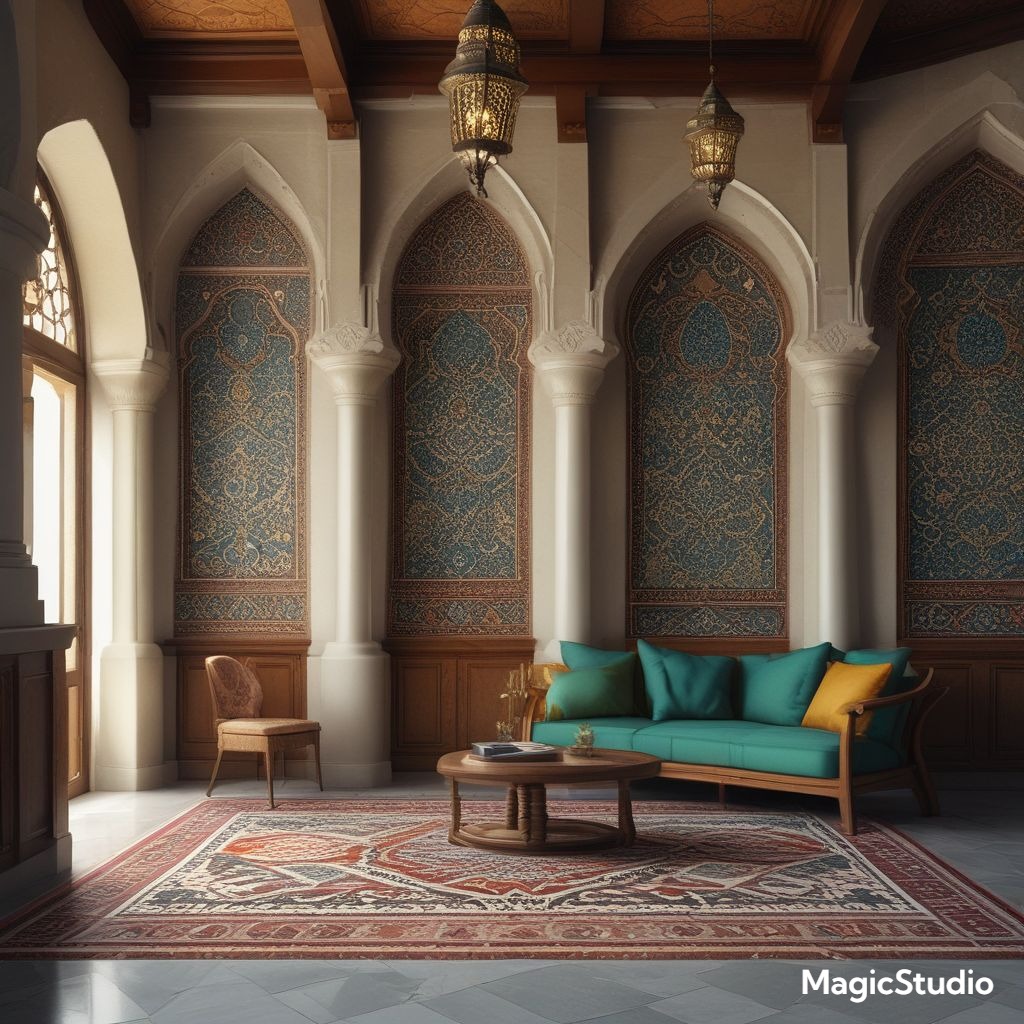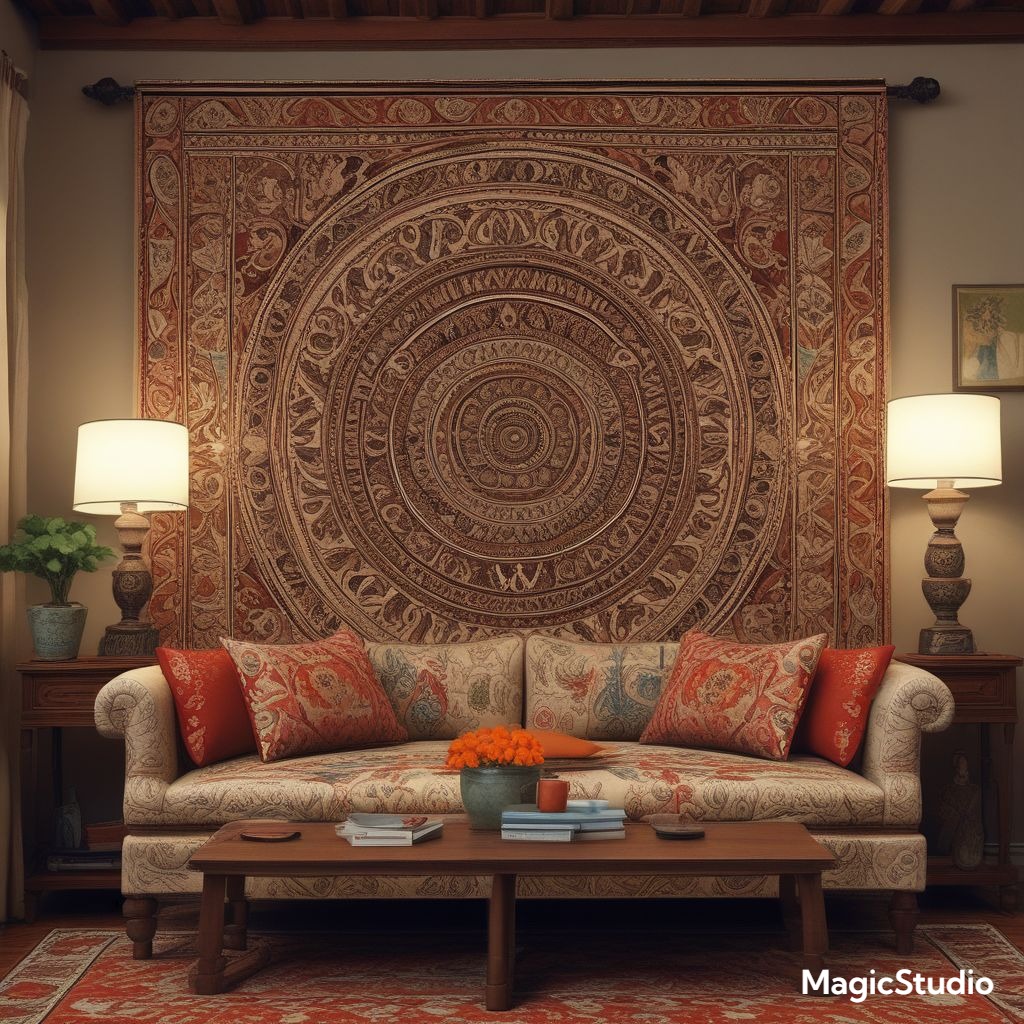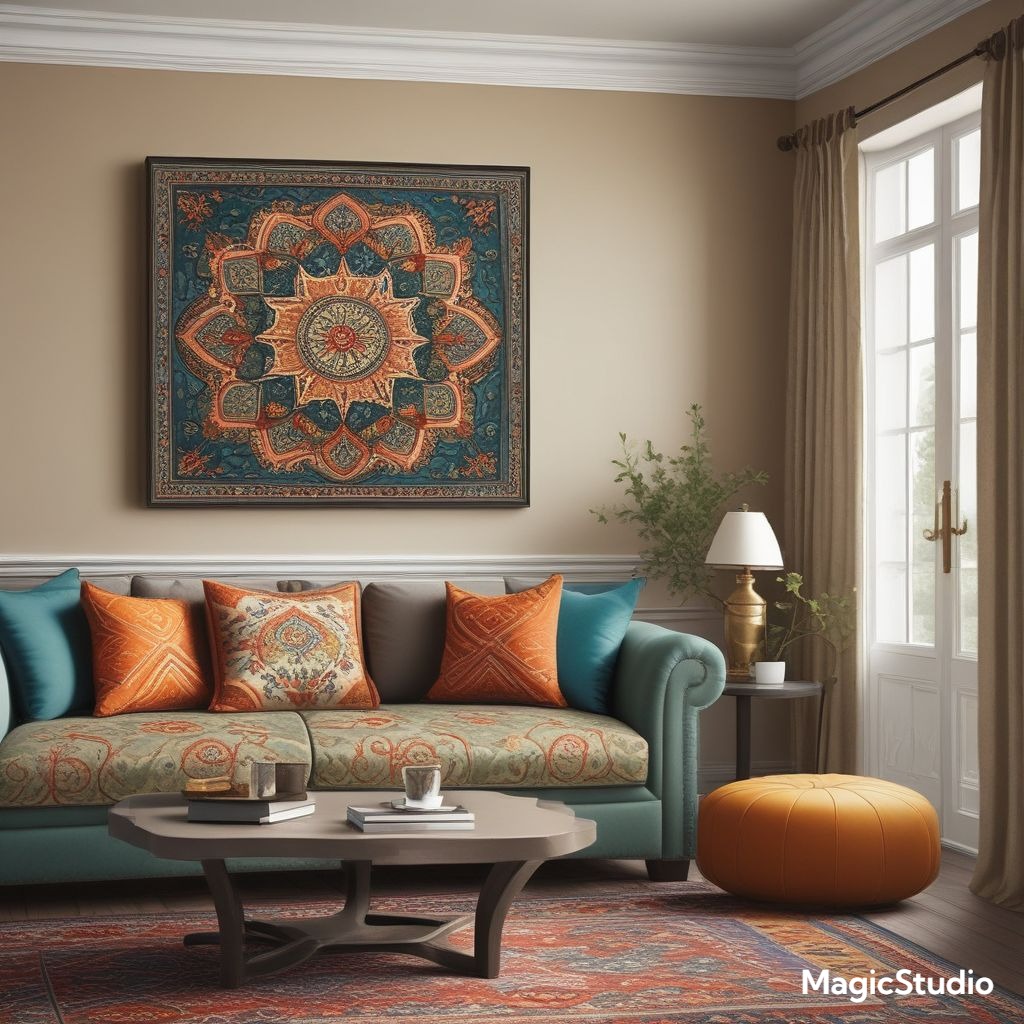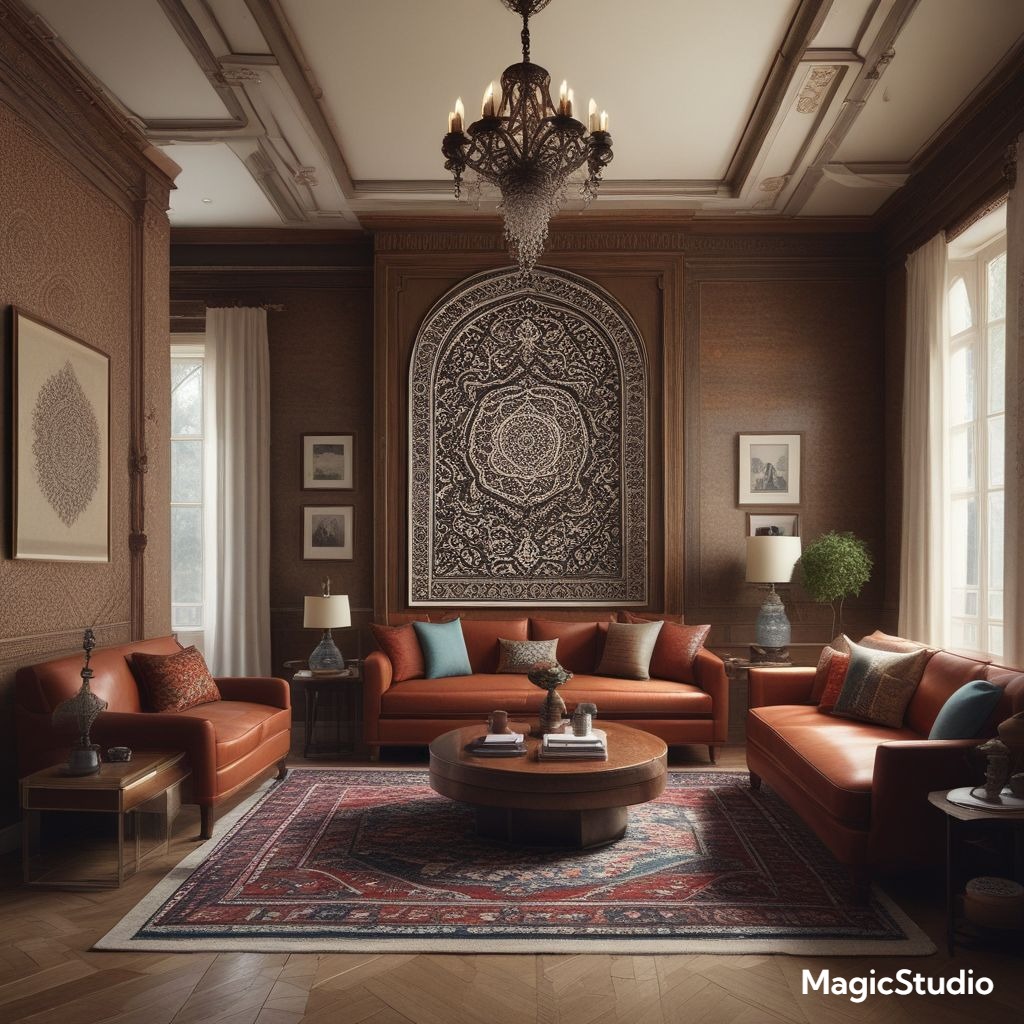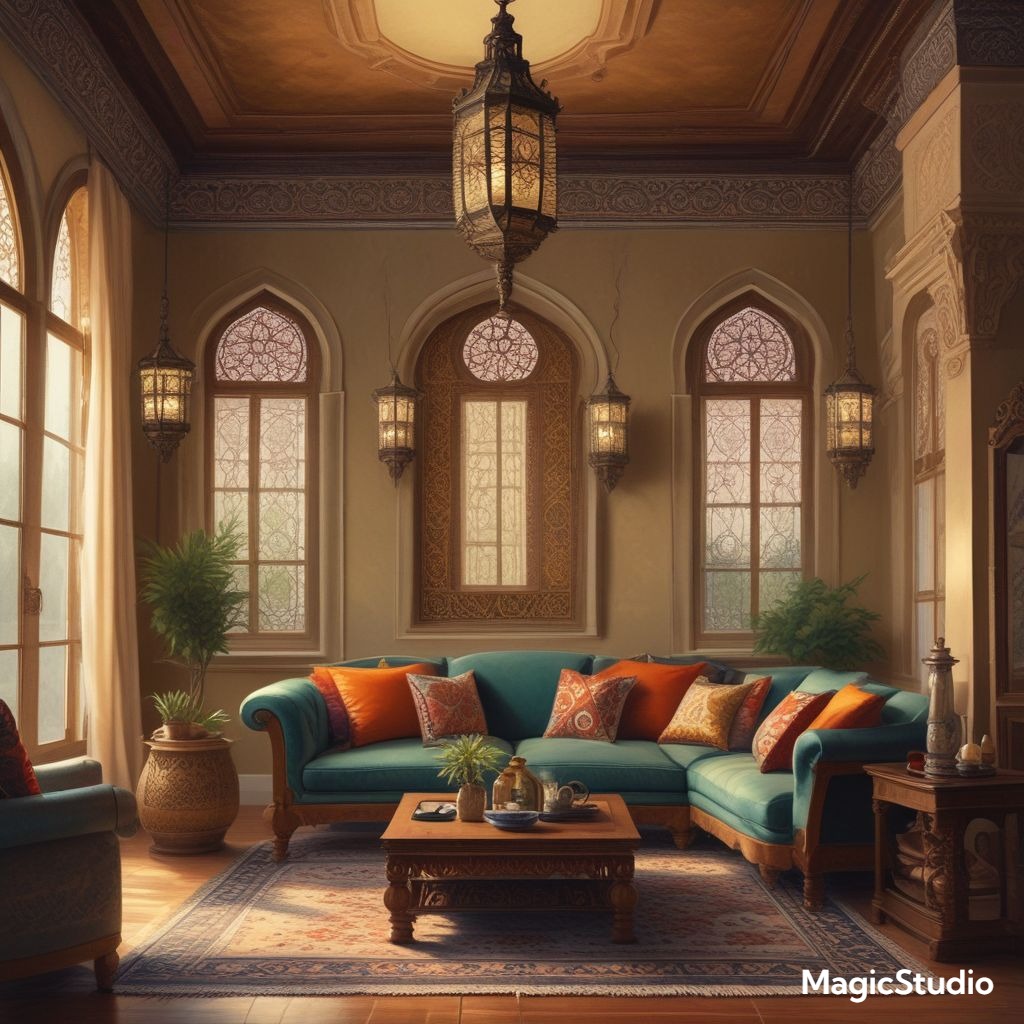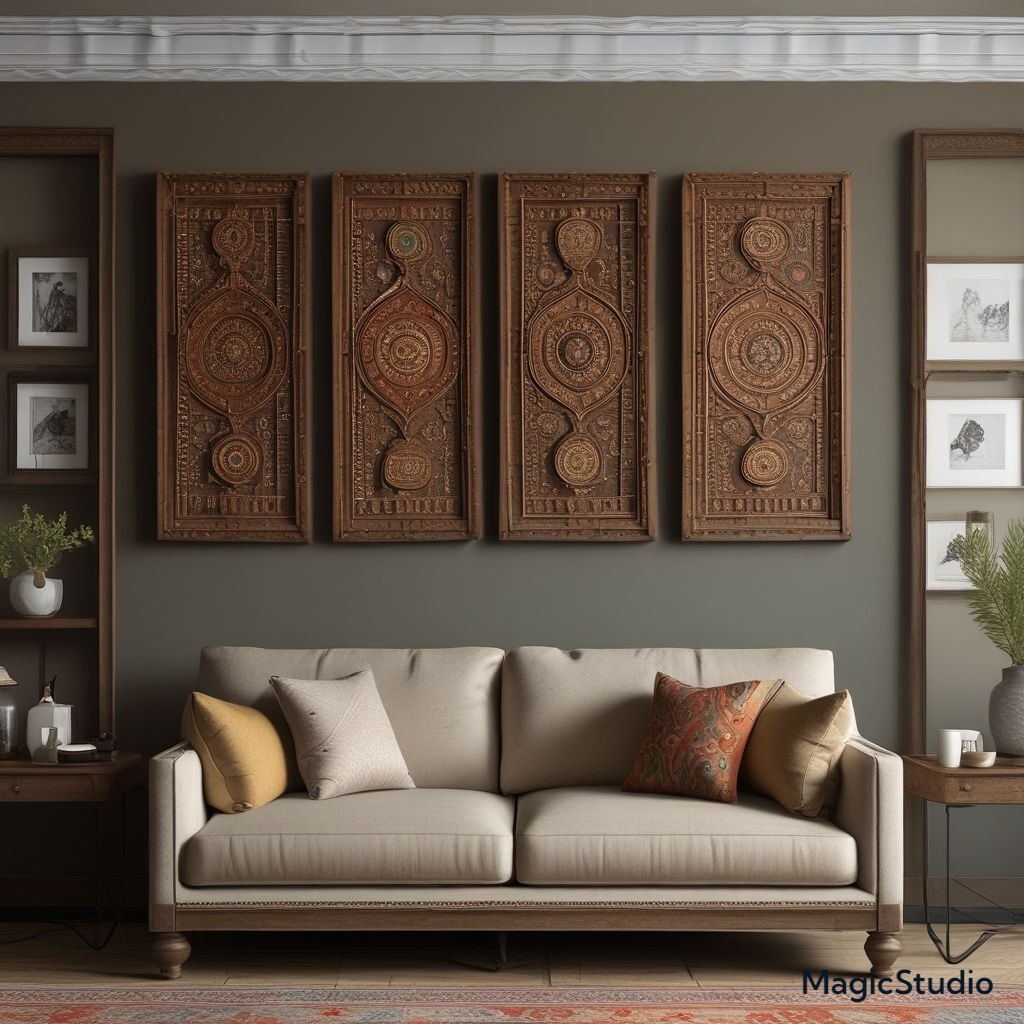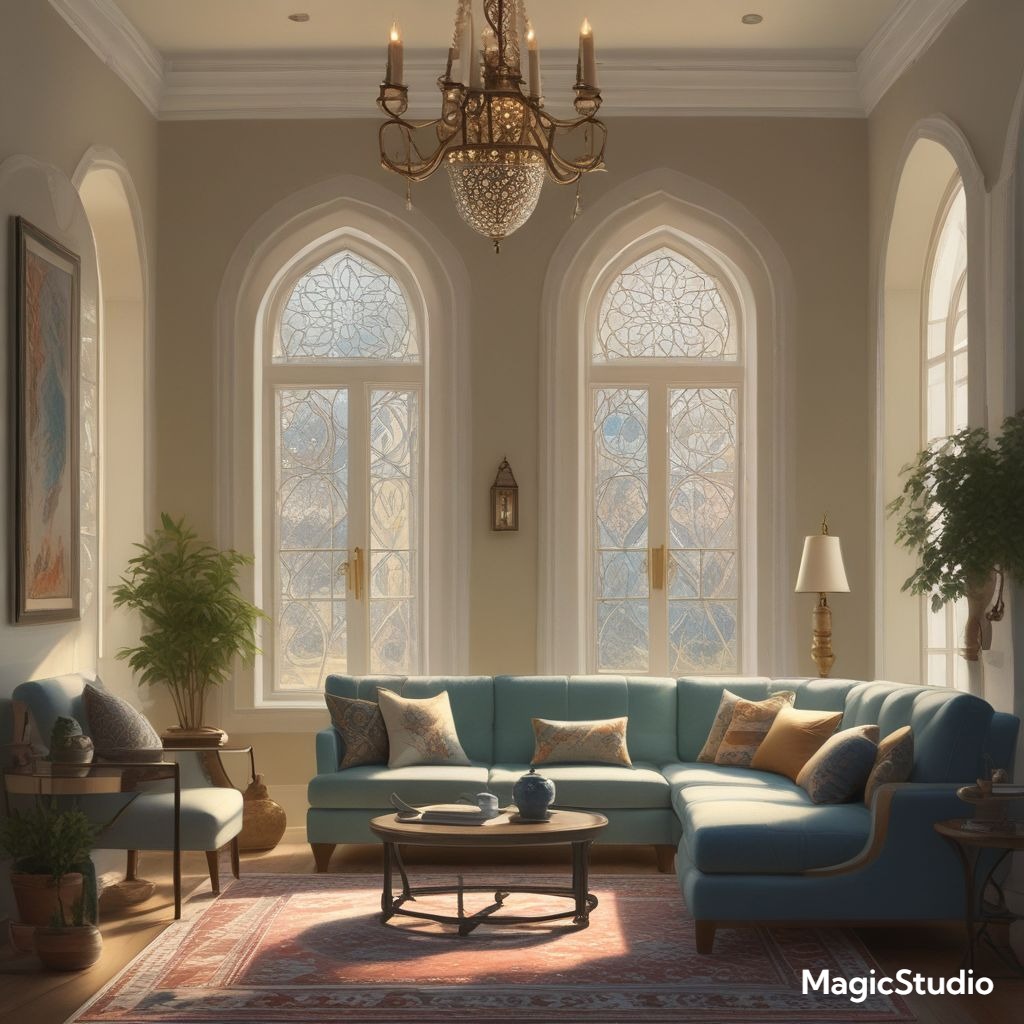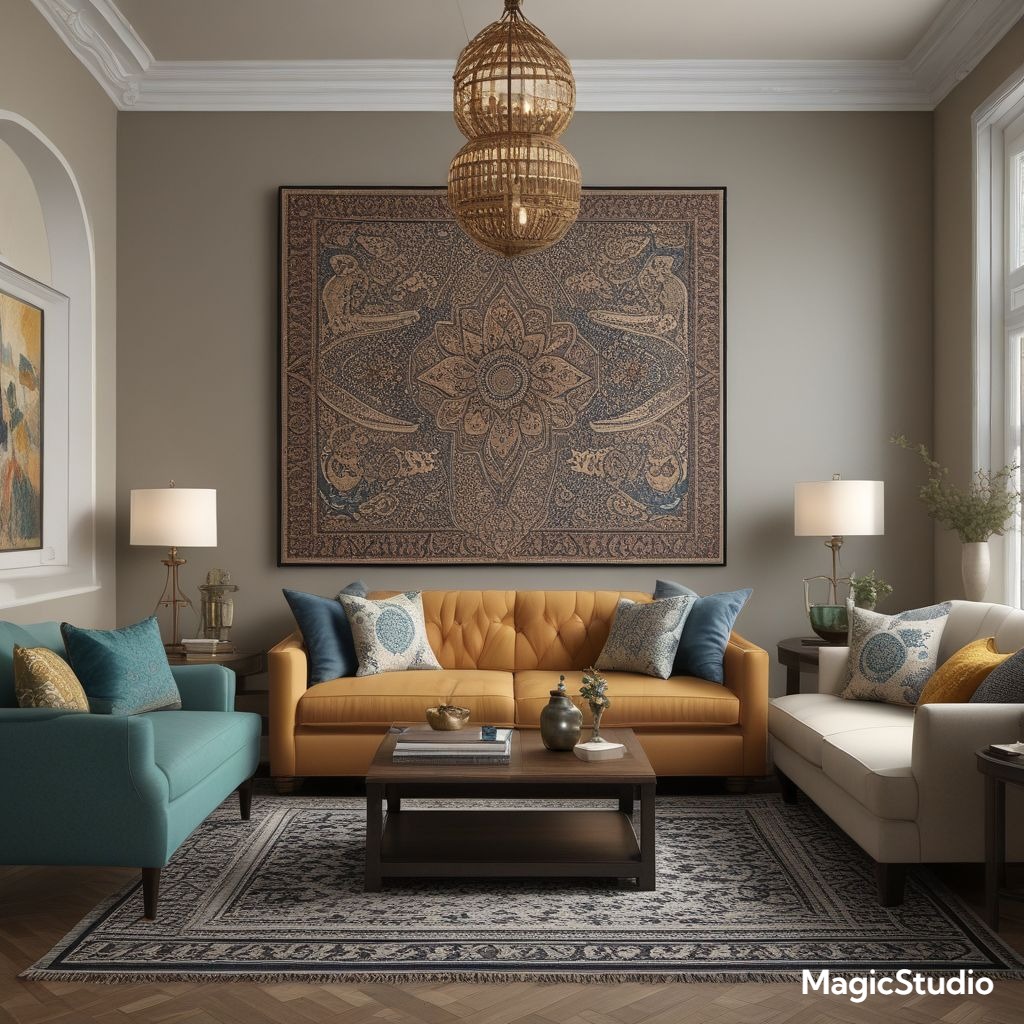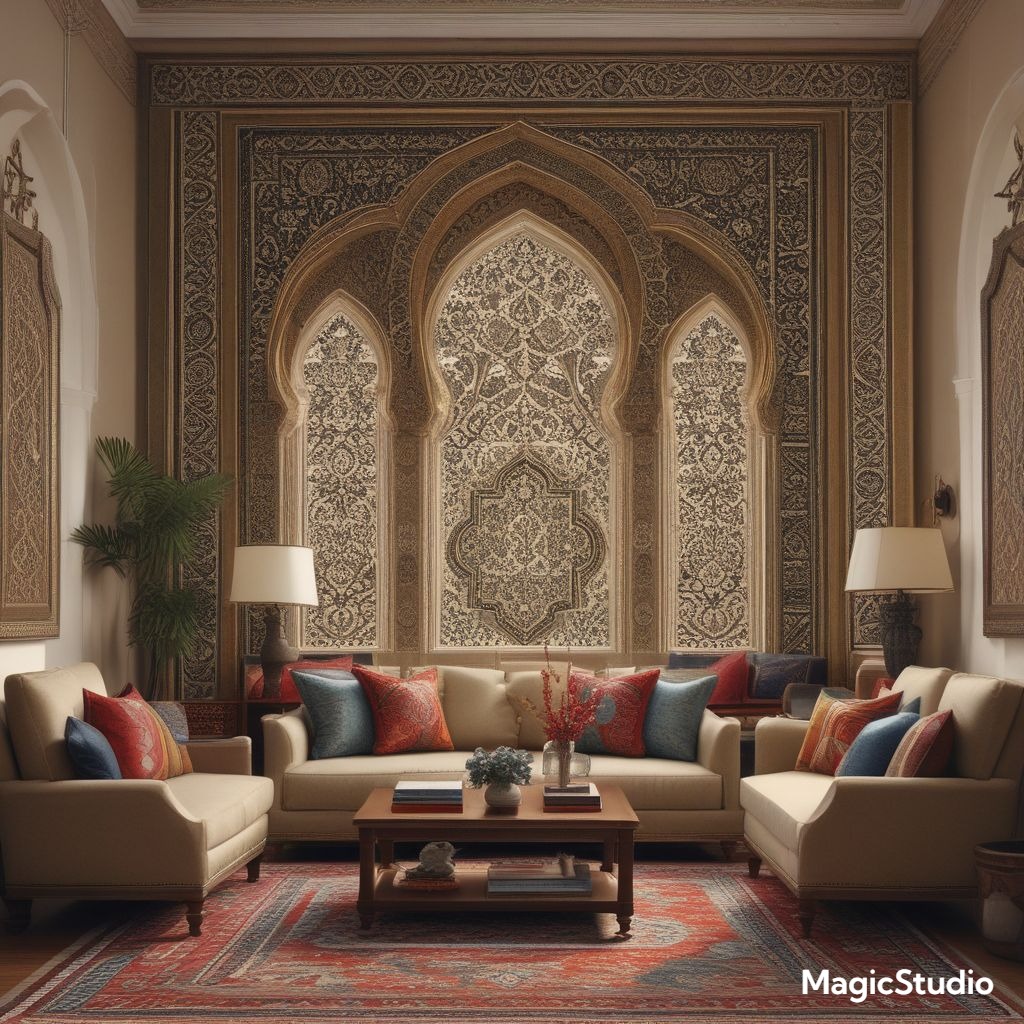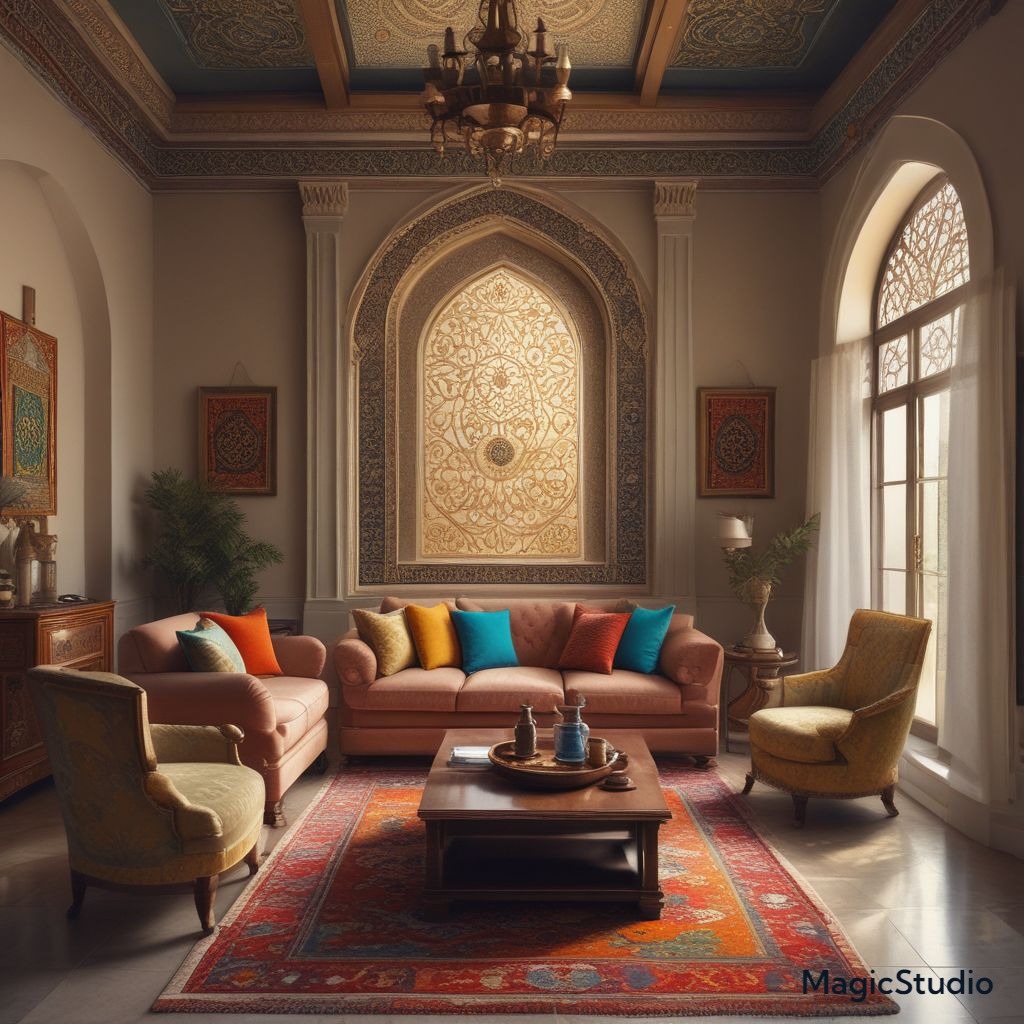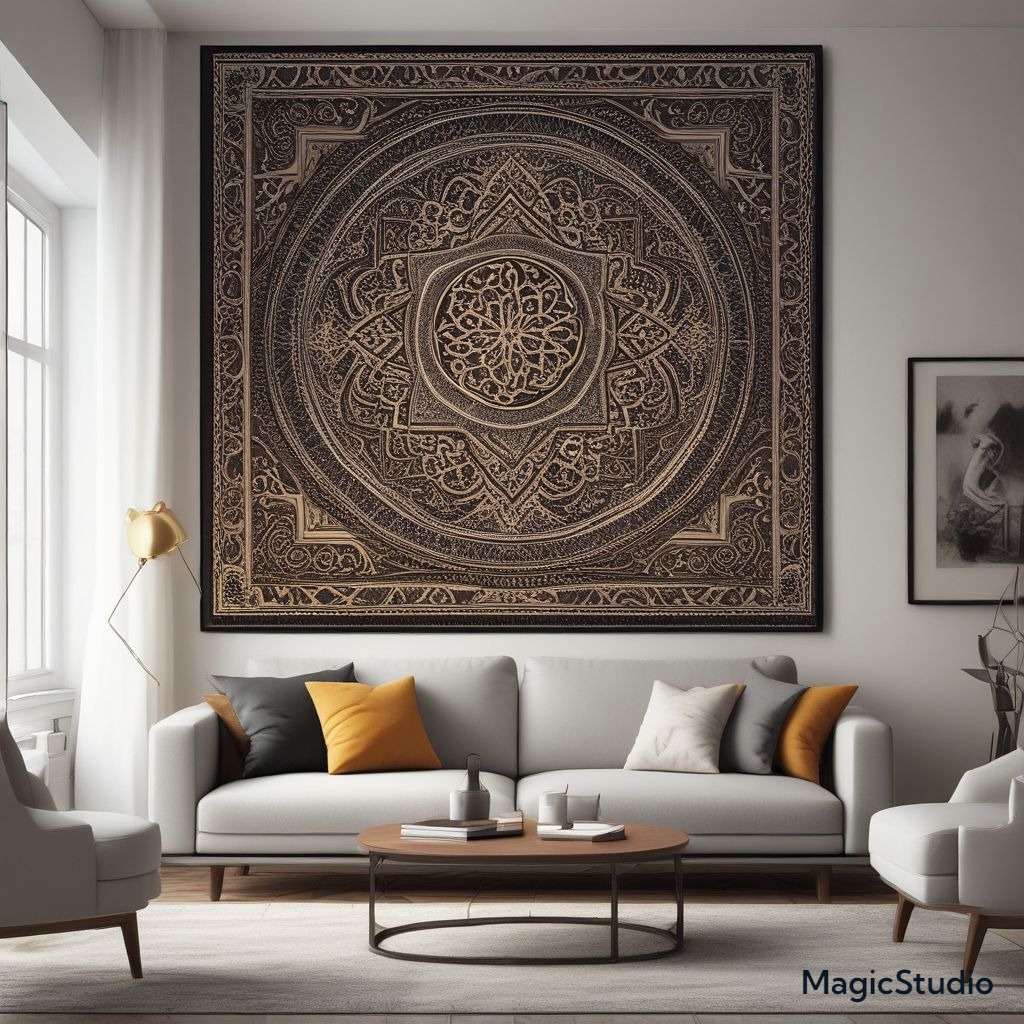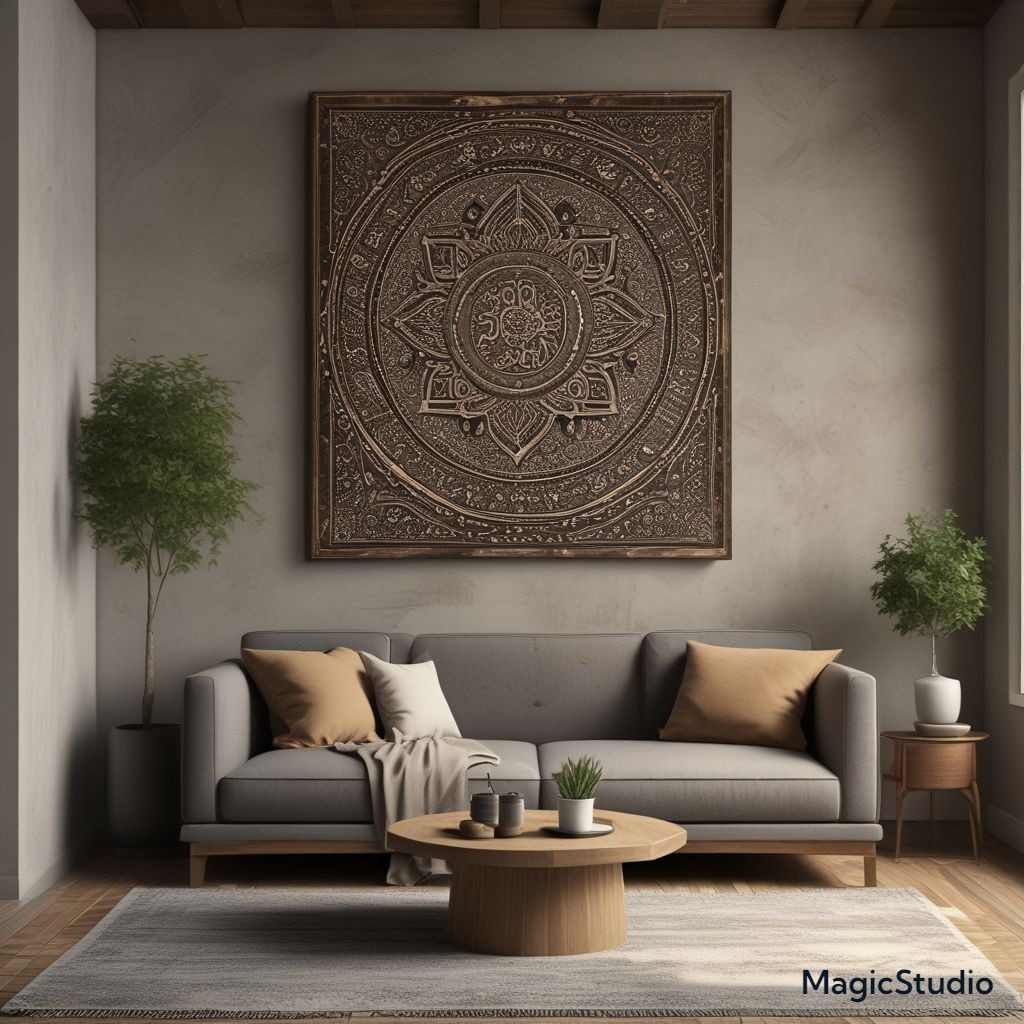Transforming your living room into a sanctuary of Islamic art and design is an exciting journey of creativity and expression. This space is often the heart of the home, welcoming guests and fostering family gatherings. By incorporating elements that reflect your faith and personal style, you can create a truly unique and inspiring environment. This article delves into 23 design ideas, exploring color palettes, patterns, and artistic expressions that resonate with Islamic aesthetics.
Geometric Patterns and Calligraphy
Embrace the timeless beauty of Islamic geometric patterns and calligraphy. This design style blends intricate geometric shapes, such as stars, squares, and arabesques, with elegant Arabic script. In contemporary US and EU interiors, these elements are often incorporated as wallpaper, murals, or framed artwork. Consider using a bold color palette like navy blue and gold for a striking visual impact, or opt for a more subtle approach with muted tones like beige and cream. The key is to create a balanced and harmonious space that celebrates Islamic art.
Intricate Tilework
Inspired by the stunning mosaic work found in mosques around the world, tilework can add a touch of opulence and cultural richness to your living room. Moroccan-style tiles with geometric patterns and vibrant colors are a popular choice. In US and EU homes, these tiles are often used as a focal point on a feature wall or fireplace surround. Consider using a combination of contrasting colors, such as turquoise and gold, or opt for a more monochromatic look with white and gray.
Arabic Calligraphy Wall Art
For a touch of spirituality and elegance, integrate Arabic calligraphy wall art into your living room decor. Choose verses from the Quran, meaningful poetry, or inspirational sayings that resonate with your faith. These can be framed prints, canvas paintings, or even intricate calligraphy pieces crafted from wood or metal. The color palette for calligraphy art is versatile. You can opt for a classic black on white, or experiment with vibrant colors like crimson, emerald green, or sapphire blue, depending on the overall color scheme of your living room.
Modern Islamic Art
Embrace contemporary interpretations of Islamic art by incorporating pieces from modern artists who draw inspiration from Islamic traditions. This can range from abstract paintings that utilize Islamic motifs to sculptures that explore geometric forms. In US and EU homes, these pieces often serve as statement pieces, adding a touch of sophistication and cultural relevance to the space. Choose a color palette that complements the artwork, such as earthy tones for abstract paintings or vibrant colors for sculptures.
Floral Motifs
Incorporate delicate floral motifs into your living room decor, drawing inspiration from the intricate patterns found in Islamic gardens. This design style utilizes stylized flowers, leaves, and vines to create a sense of serenity and beauty. These motifs can be incorporated as wallpaper, fabric panels, or framed artwork. In US and EU homes, soft pastel colors like lavender, peach, and mint green are often used for floral motifs. These hues create a calming and inviting atmosphere, while pops of gold or silver add a touch of luxury.
Archways and Domes
Create a sense of grandeur and architectural interest by incorporating archways or domes into your living room. This design element, inspired by Islamic architecture, can be achieved through structural changes or by using decorative elements like wooden beams, fabric panels, or even wallpaper. Consider using a neutral color palette for the arches and domes, allowing them to stand out against the backdrop of your living room. For a touch of warmth and sophistication, you can add accent lighting to highlight the curves and intricate details of the archways or domes.
Handmade Rugs
Add warmth and texture to your living room with handmade rugs that feature intricate Islamic patterns. These rugs can be woven from wool, silk, or cotton and often incorporate geometric designs, floral motifs, or calligraphic script. In US and EU homes, these rugs are often used as focal points, grounding the space and adding a touch of cultural richness. Choose a rug that complements the overall color scheme of your living room, and consider adding a throw pillow or blanket with similar colors and patterns to create a cohesive look.
Lanterns and Chandeliers
Create a warm and inviting ambiance with lanterns and chandeliers that draw inspiration from Islamic design. These lighting fixtures often feature intricate metalwork, stained glass, or colorful fabrics. Choose lanterns that are made of materials like brass, copper, or silver, and opt for chandeliers that feature a combination of crystals and metalwork. In US and EU homes, these lighting fixtures are often used to illuminate focal points like a fireplace, dining table, or a seating area, adding a touch of elegance and sophistication to the space.
Cultural Artifacts
Display cultural artifacts that reflect your faith and heritage to personalize your living room. This could include items like antique prayer rugs, hand-painted ceramic bowls, or intricately carved wooden boxes. Choose items that are meaningful to you and that reflect your personal style. Arrange these artifacts in a way that showcases their beauty and cultural significance. Consider grouping similar items together or creating a dedicated display shelf for your treasured possessions.
Zenith Lighting
Enhance the ambiance of your living room with zenith lighting, a technique inspired by Islamic architecture that utilizes light sources placed at the highest point of a room, often near the ceiling. This approach creates a sense of openness and light, while also highlighting the architectural details of the room. Consider using a combination of different light sources, such as spotlights, pendant lights, or even a skylight, to create a balanced and inviting lighting scheme.
Mirrored Accents
Incorporate mirrored accents into your living room to create a sense of spaciousness and reflect light, a design element that is often found in Islamic architecture. These accents can be used in a variety of ways, such as incorporating a large mirror on a wall to create the illusion of more space or using smaller mirrored trays and decorative objects to add a touch of glamour. Opt for mirrors with intricate frames or geometric patterns to enhance the overall aesthetic of your living room.
Color Palette of Serenity
Embrace a serene color palette that evokes the tranquility and beauty of Islamic art. Opt for calming hues like beige, cream, ivory, and soft blues, which can create a sense of peace and harmony. Add pops of color with accents like throw pillows, blankets, or artwork, using shades of emerald green, sapphire blue, or deep purple for a touch of vibrancy. Consider incorporating natural elements, such as wooden furniture, bamboo plants, or stone accents, to create a sense of grounding and connection to nature.
Soft Textiles and Fabrics
Add warmth and comfort to your living room with soft textiles and fabrics that resonate with Islamic aesthetics. Incorporate luxurious fabrics like velvet, silk, or brocade for upholstery, curtains, and throw pillows. Consider using intricate patterns, such as damask, paisley, or floral motifs, which are often found in traditional Islamic textiles. In US and EU homes, these fabrics are often used to create a sense of opulence and sophistication, while also providing a comfortable and inviting atmosphere.
Embroidered Artwork
Embrace the art of embroidery by incorporating embroidered artwork into your living room decor. This technique, deeply rooted in Islamic tradition, allows for the creation of intricate designs and patterns using threads of various colors. In US and EU homes, these pieces often serve as statement pieces, adding a touch of craftsmanship and cultural significance to the space. Choose embroidery that features Islamic motifs like floral patterns, geometric designs, or Arabic calligraphy, and frame it in a way that showcases its intricate details.
Sufi Inspired Art
Explore the mystical world of Sufism by incorporating artwork inspired by this branch of Islamic mysticism. Sufi art often features abstract designs, calligraphy, and symbolism that evoke a sense of spiritual awakening. In US and EU homes, these pieces often serve as conversation starters, sparking discussions about faith and philosophy. Choose artwork that resonates with your personal beliefs and values, and frame it in a way that complements the overall aesthetic of your living room.
Hand-Painted Ceramics
Add a touch of artisan craftsmanship to your living room by incorporating hand-painted ceramics. This tradition, deeply rooted in Islamic culture, allows for the creation of beautiful and unique pieces that reflect the artist’s skill and creativity. In US and EU homes, these ceramics are often used as decorative accents, adding a touch of color, texture, and cultural significance to the space. Choose ceramics that feature traditional Islamic patterns, such as geometric designs, floral motifs, or calligraphic script, and display them on shelves, mantles, or coffee tables.
Modern Minimalism
Embrace a modern minimalist aesthetic by incorporating clean lines, simple forms, and a neutral color palette into your living room decor. This approach focuses on creating a sense of spaciousness and tranquility, while still incorporating elements that reflect Islamic aesthetics. Consider using geometric patterns, calligraphy, or abstract artwork in a muted color palette like white, gray, or beige. This minimalist approach allows for the beauty of Islamic art to be showcased in a contemporary context, creating a harmonious and stylish space.
Wabi-Sabi Influences
Incorporate Wabi-Sabi influences into your living room decor, a Japanese aesthetic that celebrates imperfection and natural beauty. This approach embraces the beauty of age, wear, and tear, and encourages the use of natural materials like wood, stone, and ceramics. In US and EU homes, this aesthetic is often used to create a sense of warmth, comfort, and authenticity. Consider incorporating elements like antique rugs, hand-crafted furniture, or rustic pottery into your living room, allowing these imperfections to add character and depth to your design.
